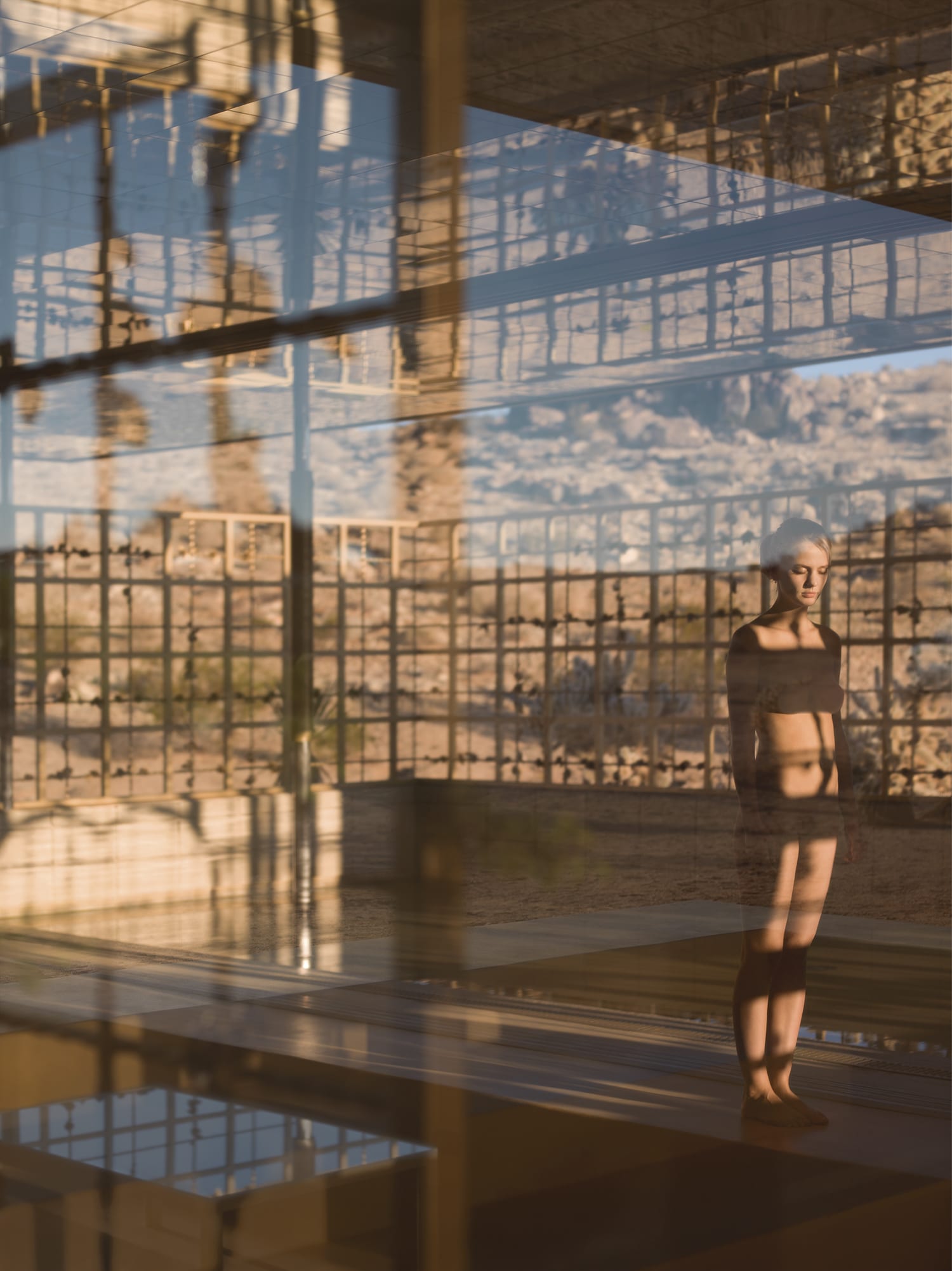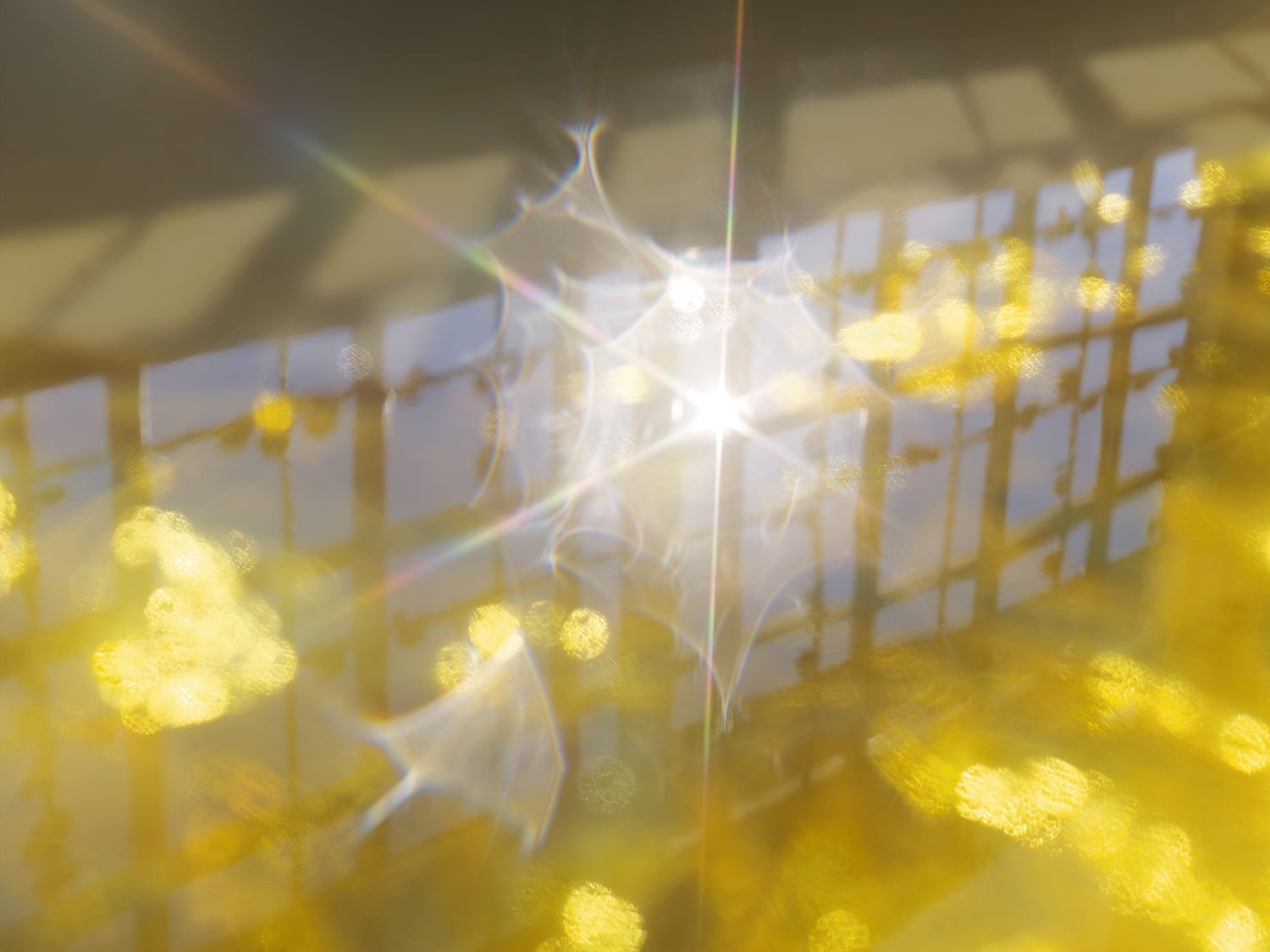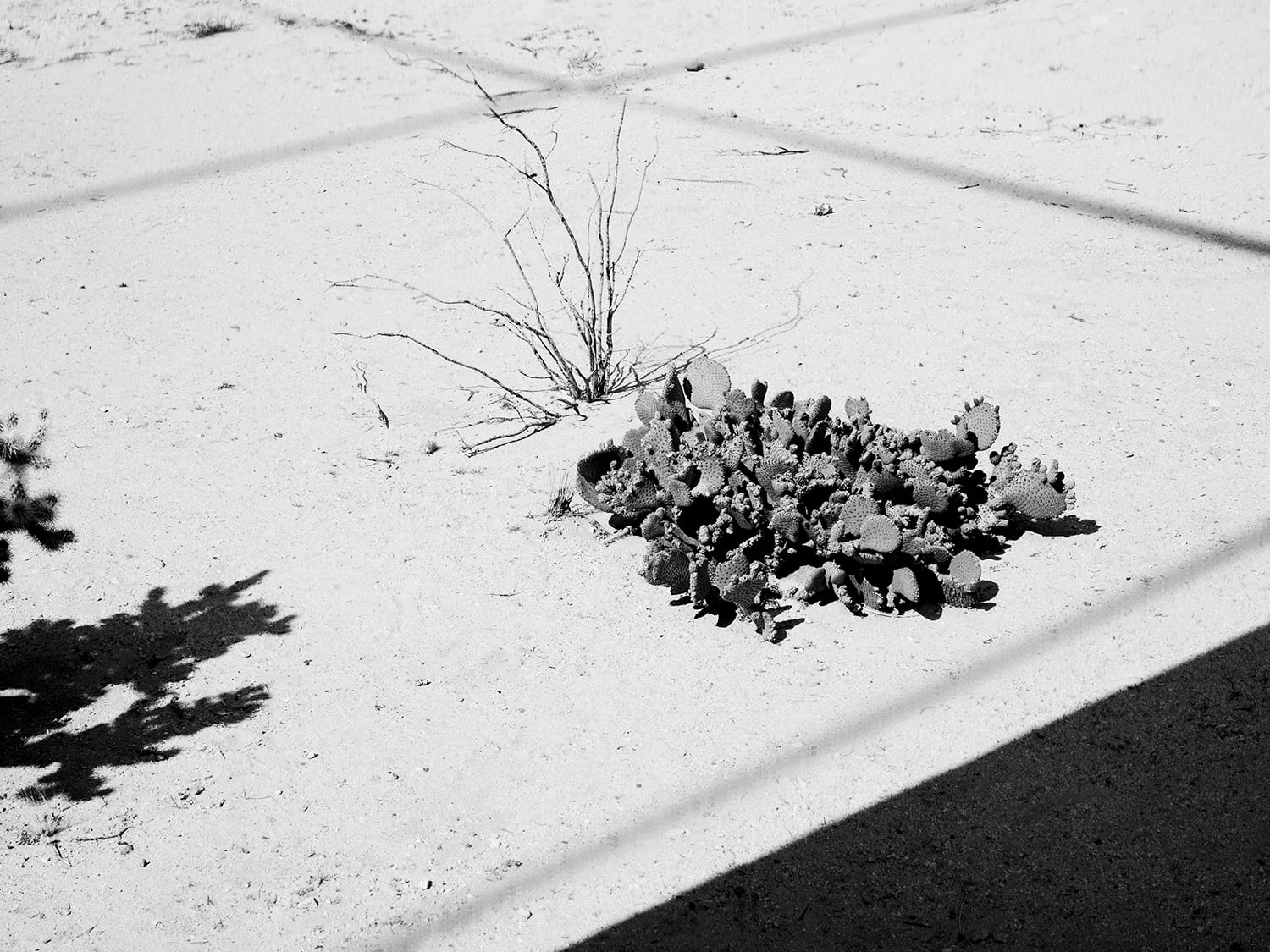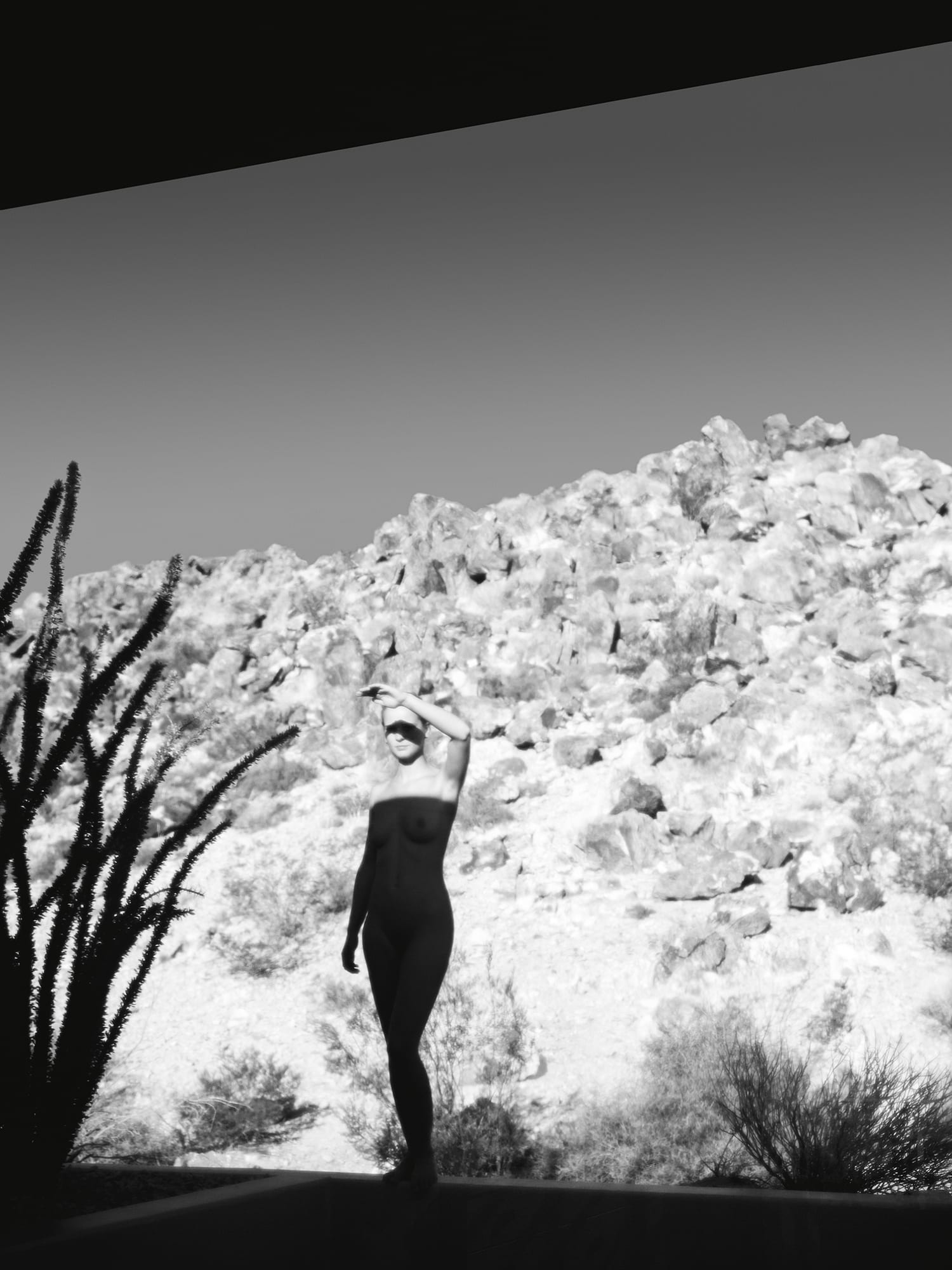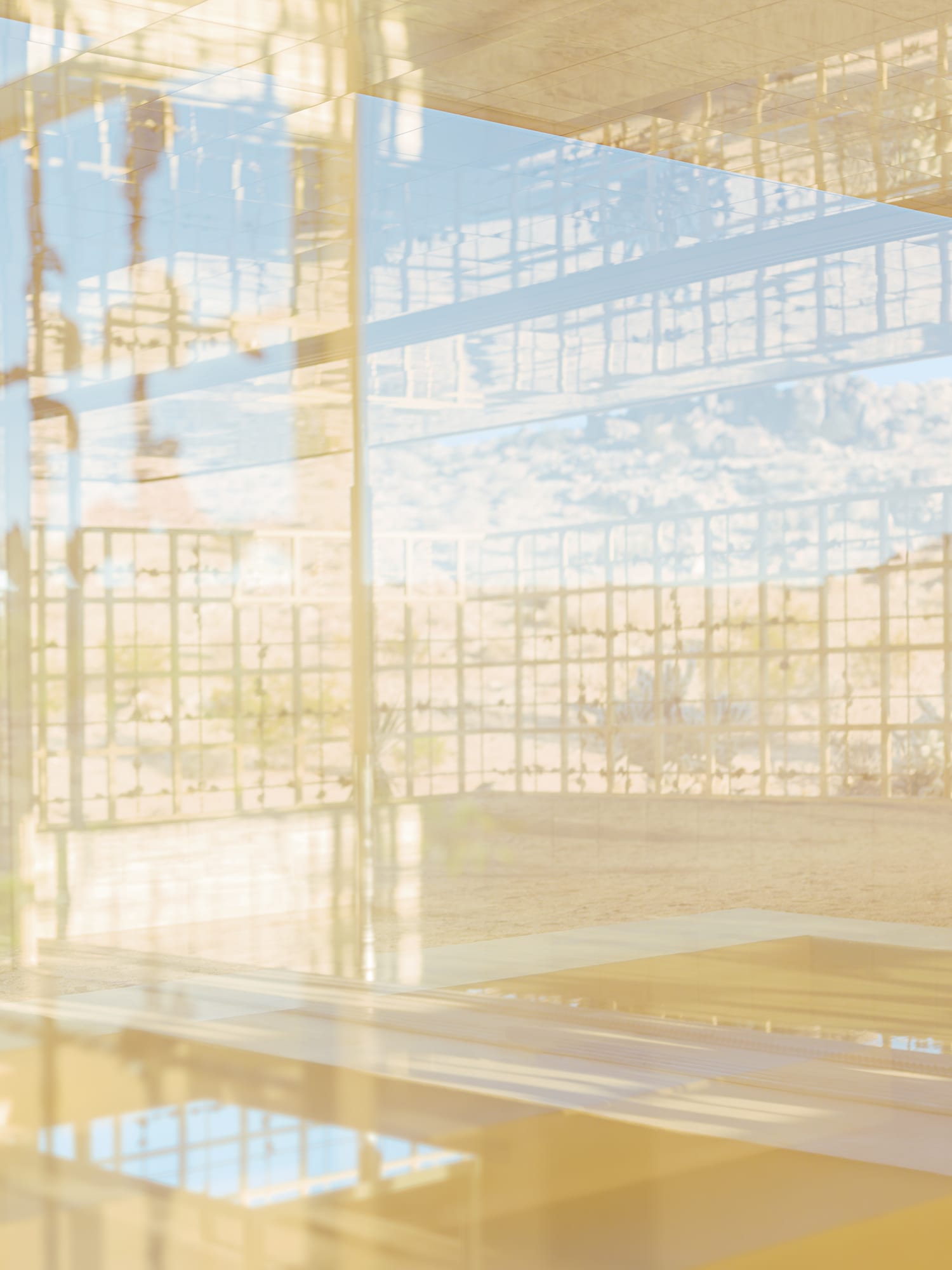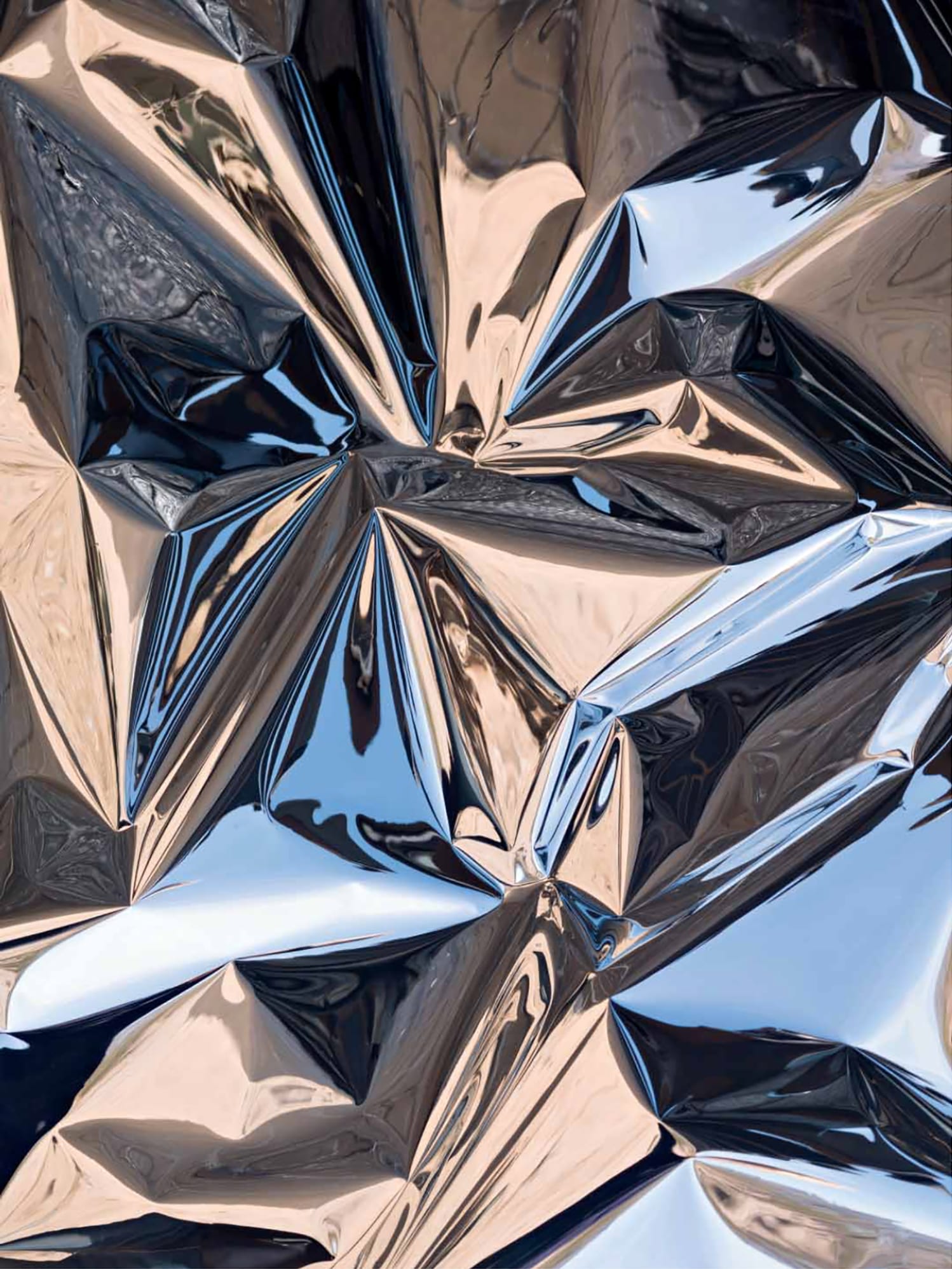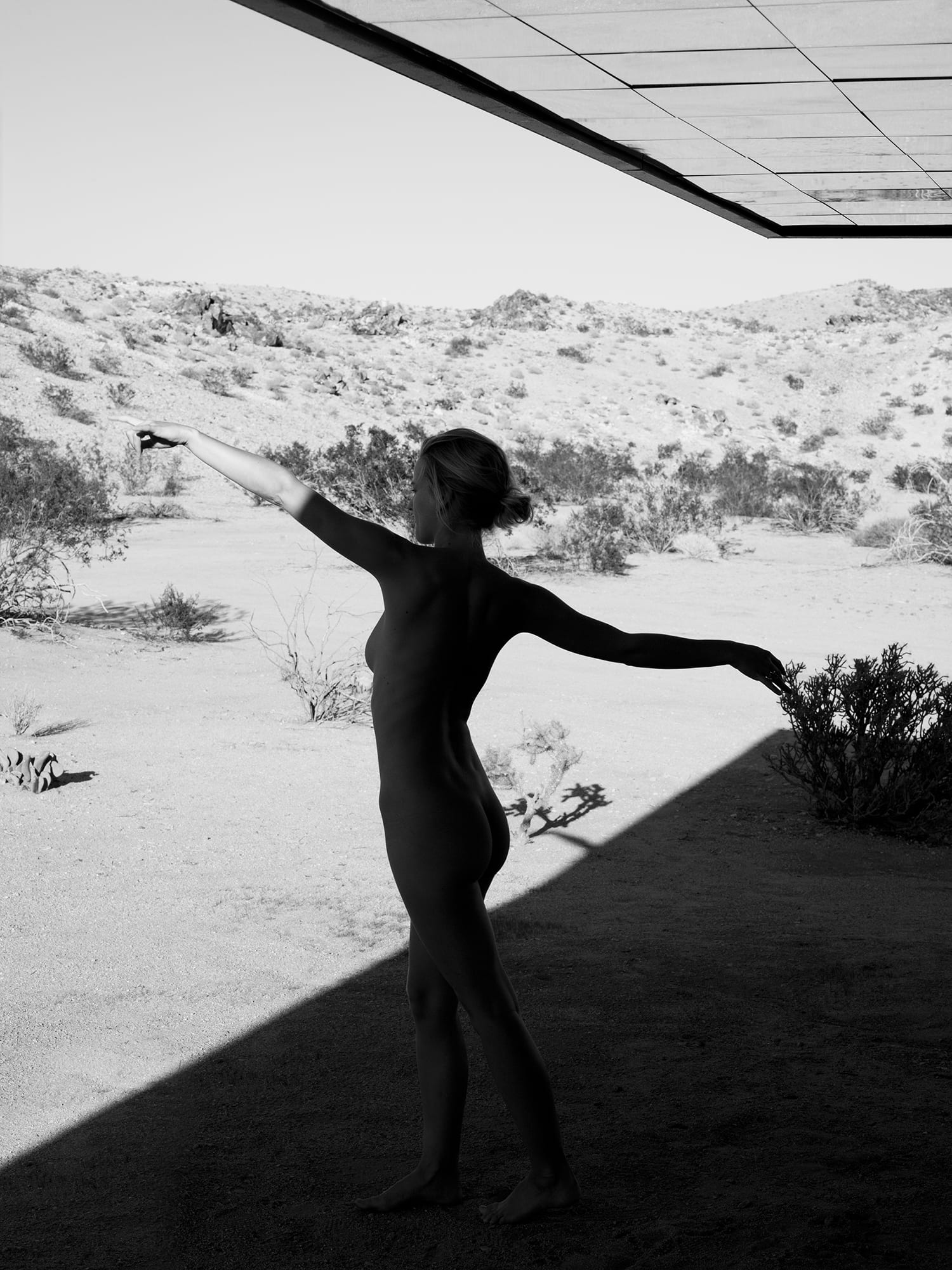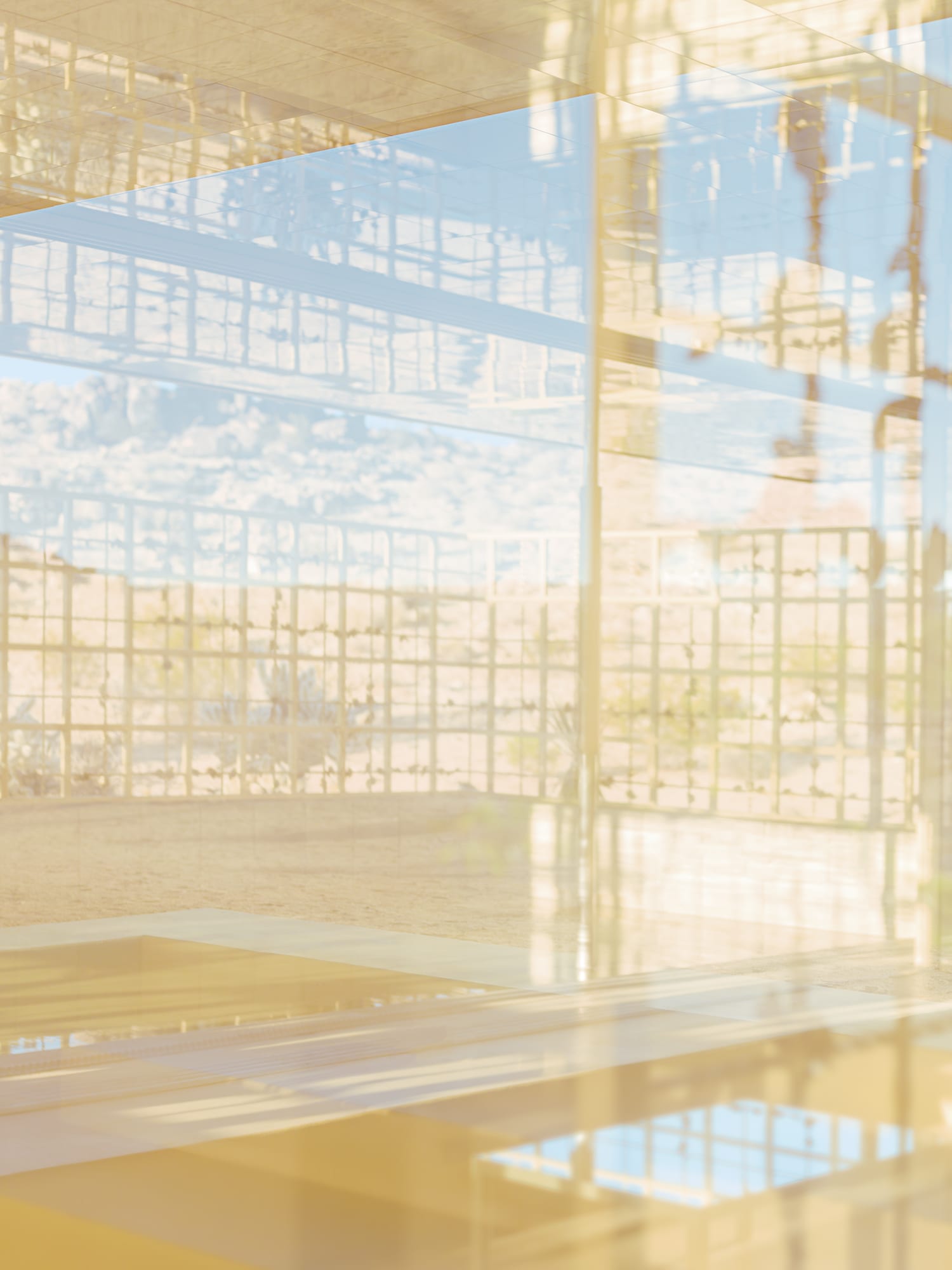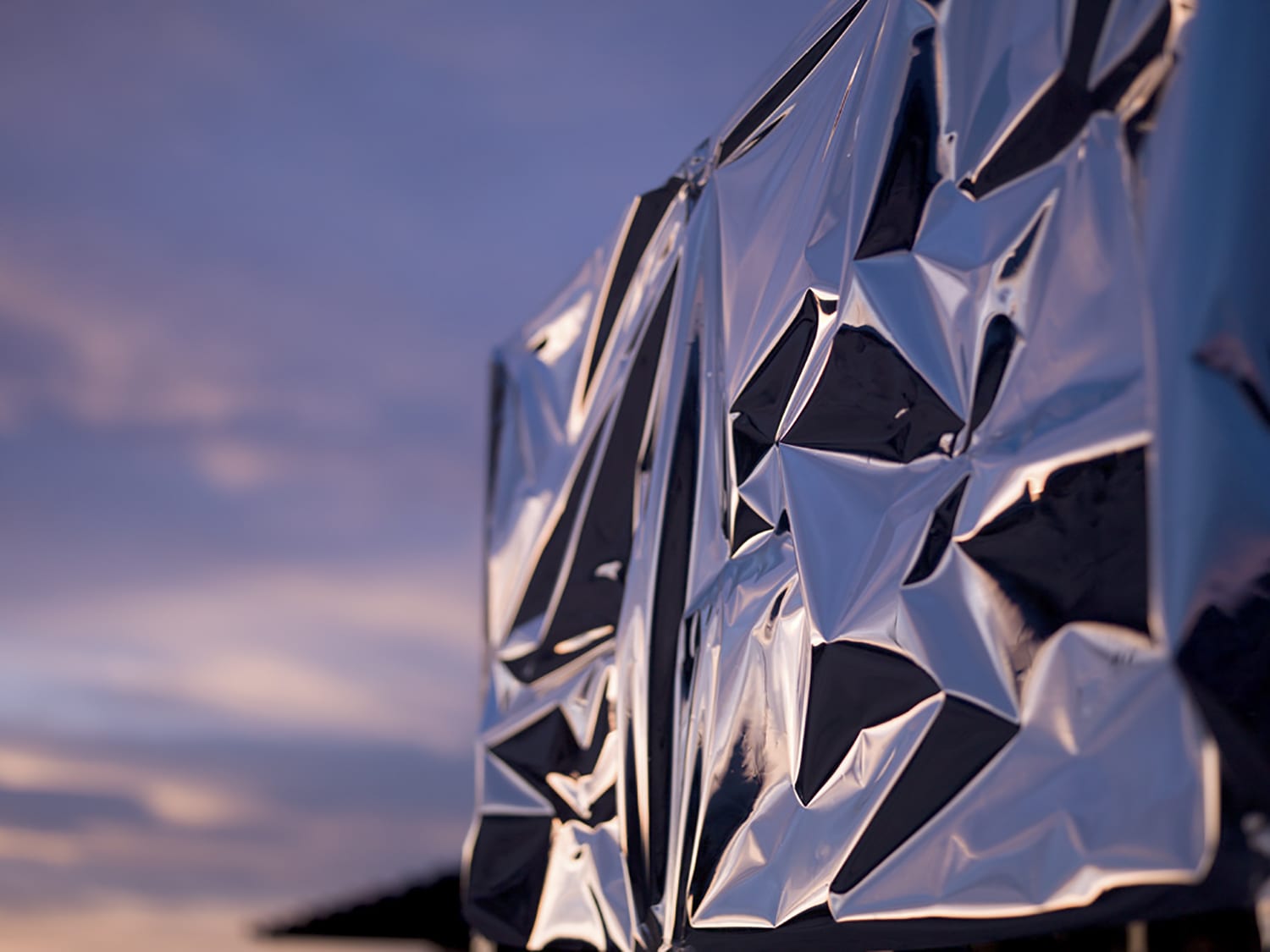“I got into photography because I’m a little restless, and I liked that it was fast,” says Brazilian photographer Mona Kuhn, who has just published her sixth book with Steidl, She Disappeared Into Complete Silence. Even so, the speed of photography haunted her, as Kuhn feared that her photographs would be consumed then discarded – like so many of the magazines she read and tossed away. “I wanted to stop time with photography,” she says. “That’s another reason I got into nudes, for the timeless aspect.”
She Disappeared Into Complete Silence is an experimental project shot in Acido Dorado, a reflective house in the middle of the Californian desert designed by American architect Robert Stone. Inside it are mirrored ceilings and walls, which refract sheets of golden desert light that flood the house. Here, Kuhn presents a solitary nude on the edge of the desert, removed from any symbols of time, creating “an abstraction of being,” and “a space where our mind resides”.
“It felt like an optical extension of my camera,” says Kuhn, who came across the house on an early morning hike while staying with friends who lived in the area. The multiple reflections made the light difficult to control, so for the first time in a personal project, Kuhn worked digitally, to give herself more freedom and reassurance. “In photography we’re used to trying to find a balance in composition. In this work I felt very comfortable with the composition, but the bigger thing that I learned was not to compose the image itself, but to compose the balance of the materials around me.”
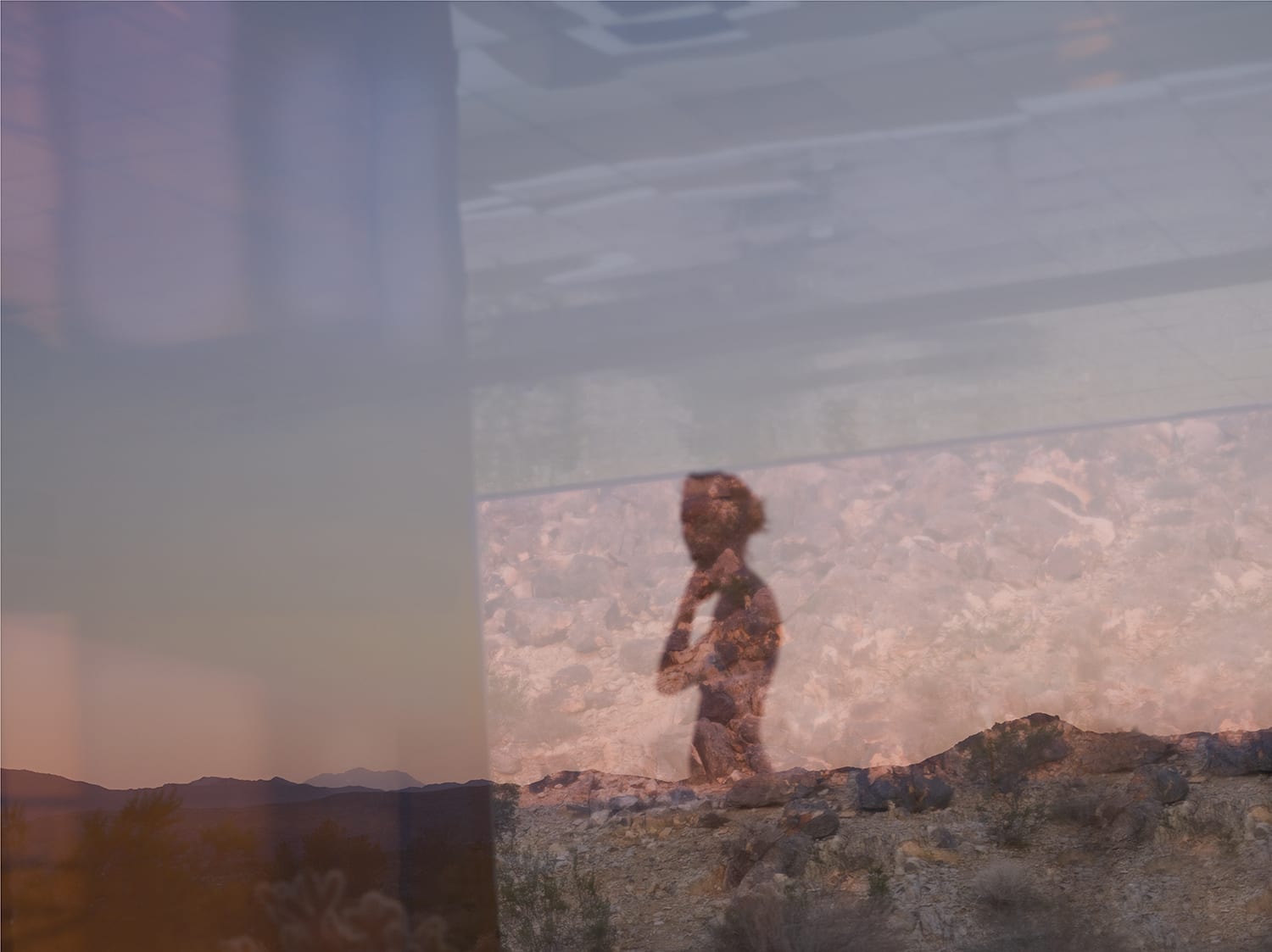
Kuhn describes a moment in shooting where the house became “too present”. She wanted balance elements of the architecture, the landscape, and the being, so she introduced huge sheets of metal foil which she crinkled up and photographed. “It’s not just about embracing the abstractions in the glass, but also taming it,” she explains.
“In a more abstract way of thinking, I thought it was important to push the physical representation into light and abstraction because I see it as a metaphor for how we are currently refracted,” says Kuhn. “Our minds are so refracted by the digital age and multiple platforms, I think that our being itself, our understanding of our body, is becoming a bit shattered.”
The model in She Disappears is Kuhn’s long-term friend Jacintha, who the book is dedicated to. “My best work starts when people forget they’re naked,” says Kuhn. “I work with nudes because I’m interested in the presence of a being, which needs to have a foundation of trust and respect that comes from knowing each other.
“I’m hesitant to call her a muse because it sounds so old fashioned,” she adds. “I’d call her a soul sister really, because she is someone I’ve known for so long, who had the patience and gracefulness of posing, and understanding the creative process, and pushing it forwards together.”
www.monakuhn.com She Disappeared Into Complete Silence is published by Steidl, priced €45 www.steidl.de
